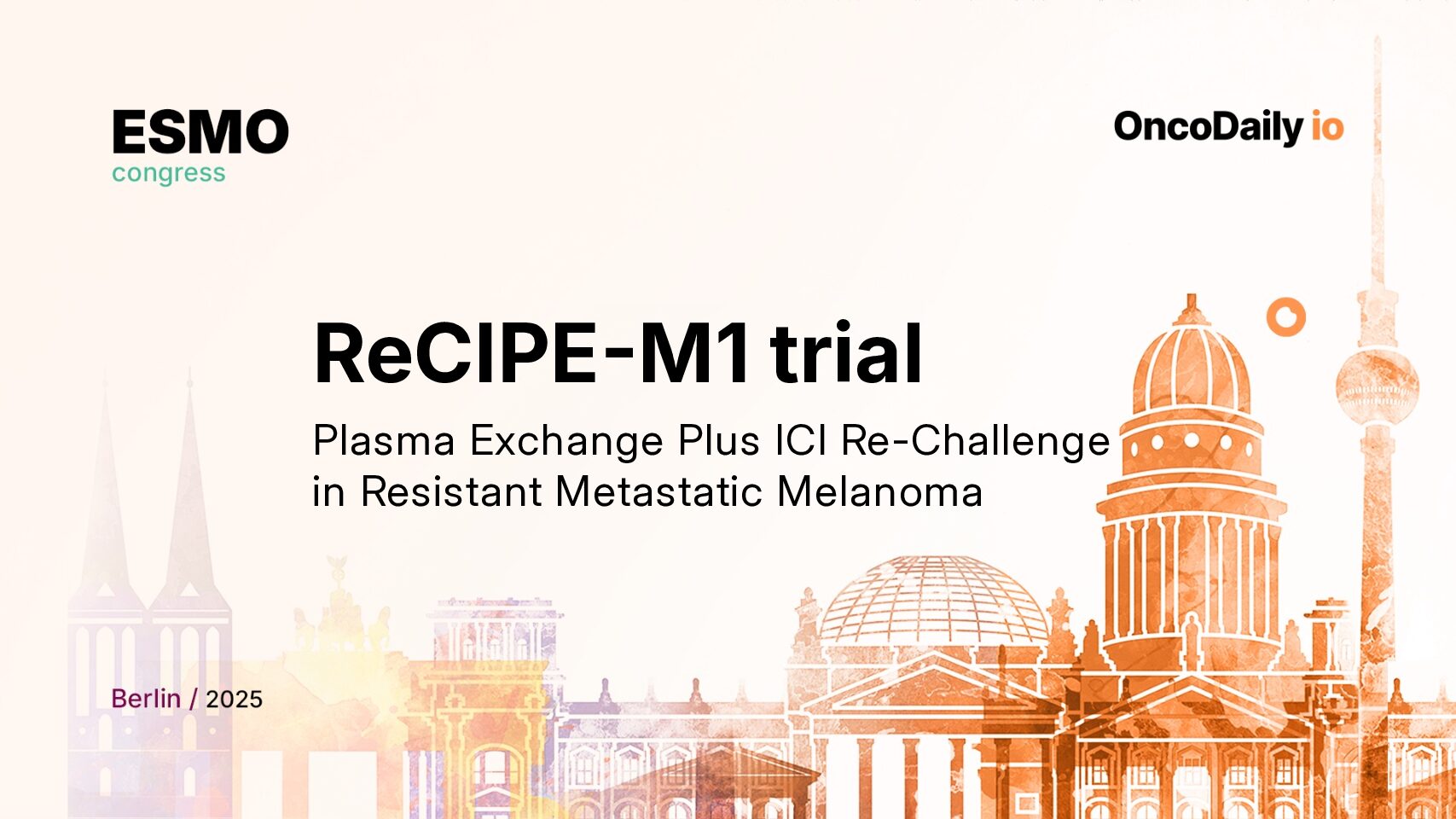Immune checkpoint inhibitors (ICIs) such as anti–PD-1 and anti–CTLA-4 antibodies have transformed the management of metastatic melanoma, producing long-term remissions in a subset of patients. However, for many, acquired or primary resistance develops, and once tumors become ICI-refractory, outcomes are typically poor and options are limited.
Emerging evidence indicates that soluble PD-L1 (sPD-L1) and other circulating immunosuppressive factors in the plasma contribute to immune evasion and resistance to ICIs. Previous work from this group demonstrated that therapeutic plasma exchange (TPE) can effectively remove sPD-L1 from the circulation, potentially reversing this immunosuppressive environment.
Building on this rationale, the investigators hypothesized that TPE followed by ICI re-challenge could restore tumor sensitivity to immunotherapy and lead to renewed clinical benefit in patients with ICI-refractory melanoma.
Methods
A total of 34 patients with ICI-refractory metastatic melanoma were screened for participation in the ReCIPE-M1 (NCT04581382) study. Of these, 18 patients with elevated sPD-L1 levels (≥1.7 ng/mL) were enrolled and underwent treatment.
Each patient received three sessions of TPE administered once daily for three consecutive days to clear sPD-L1 from circulation, followed immediately by ICI re-challenge.
- Primary endpoints: safety (adverse events) and reduction in circulating sPD-L1.
- Secondary endpoints: overall survival (OS), objective response rate (ORR), and progression-free survival (PFS).
- Additional correlative analyses were performed to identify immune and cytokine biomarkers predictive of response and survival.
Results
The combination of TPE and ICI re-challenge produced promising clinical outcomes in this heavily pretreated population.
- The overall response rate (ORR) was 61% (11 of 18 patients), with some patients achieving durable, years-long disease-free survival after re-challenge.
- Overall survival (OS) strongly correlated with both the extent and duration of sPD-L1 suppression following TPE.
Beyond sPD-L1, the study also identified additional circulating immune factors that predicted survival outcomes after ICI re-challenge:
Poor (inferior) survival was associated with elevated or surging levels of
- CD84 (HR 27.6, p = 0.003)
- IL1α (HR 18.7, p = 0.013)
- IL1β (HR 4.7, p = 0.028)
- IL18 (HR 7.5, p = 0.016)
Improved (superior) survival was predicted by increases in
- Wnt signaling inhibitors (HR 0.1, p = 0.007)
- Complement activation pathways (HR 0.012, p = 0.02)
In extended follow-up, patients who demonstrated rising levels of anti-tumor immune cell subsets—such as activated T cells—also experienced longer survival, with these immune shifts correlating closely with the modulation of circulating soluble factors.

Conclusions
This study provides proof-of-concept evidence that therapeutic plasma exchange (TPE), followed by immune checkpoint inhibitor re-challenge, may restore antitumor immunity in patients with ICI-refractory metastatic melanoma.
The 61% response rate and prolonged durations of response observed compare favorably with historical benchmarks from ICI re-challenge or ICI-switch monotherapy trials. These findings suggest that reducing soluble immunosuppressive mediators, such as sPD-L1 and specific cytokines, may help re-sensitize tumors to checkpoint blockade.
The authors acknowledge the study’s limitations, including its single-arm design and the use of radiotherapy to a minority of lesions, which may have contributed to the observed immune activation. Nevertheless, the data strongly justify the continuation of randomized, controlled trials now underway to validate these findings.
You can read article here
